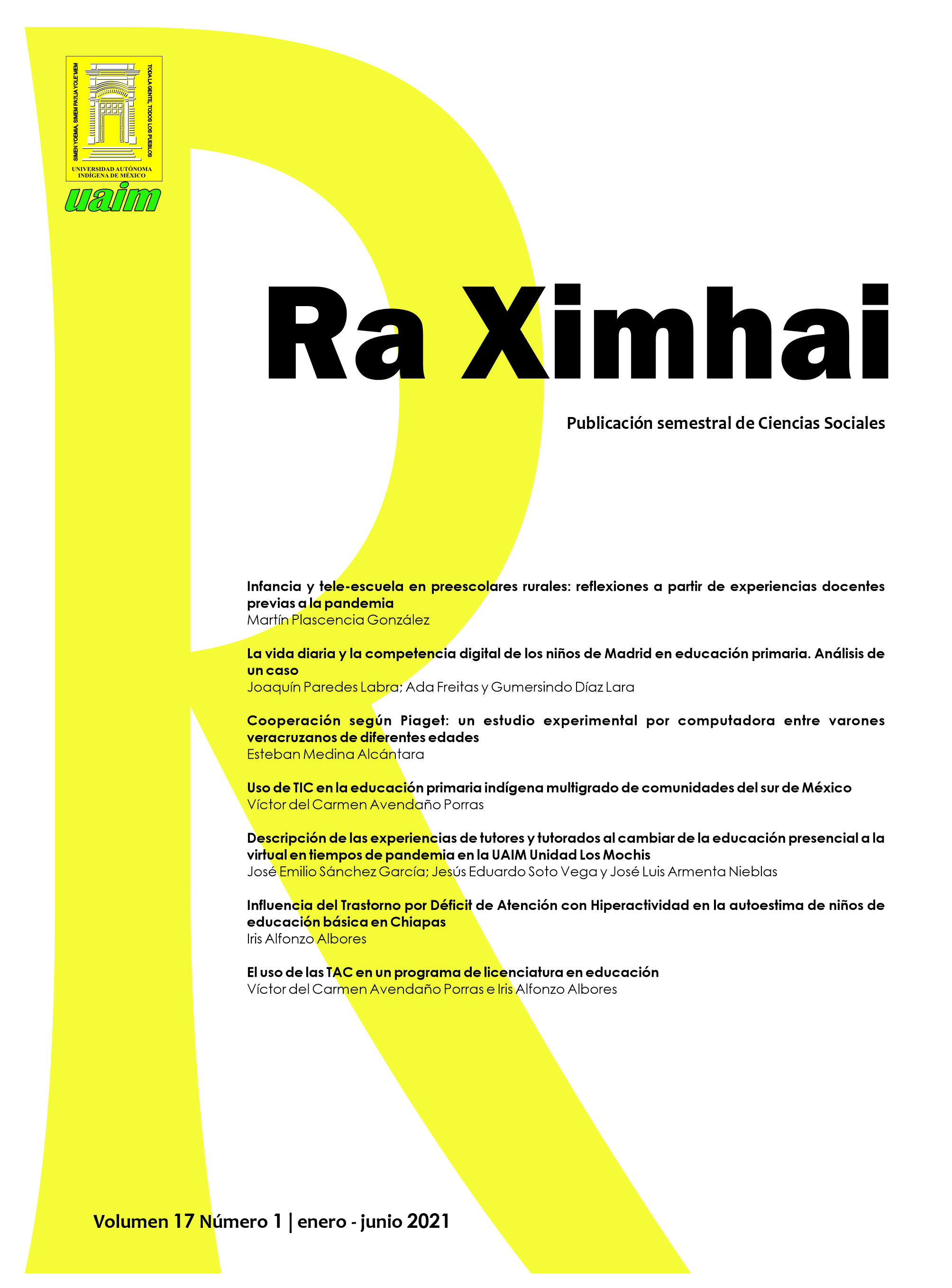Influence of Attention Deficit Hyperactivity Disorder on the self-esteem of elementary school children in Chiapas
DOI:
https://doi.org/10.35197/rx.17.01.2021.06.iaKeywords:
self-esteem, Attention Deficit and Hyperactivity, education, elementary school studentsAbstract
Currently, children are subjected to endless labels because of behaviors that society qualifies as im-proper, generally they are compared with other children of the same age, noting that their beha-vior differs significantly from what is expected. Attention deficit hyperactivity disorder (ADHD) is the most common neurobehavioral syndrome in childhood and can continue through ado-lescence and adulthood. The manifestations of ADHD appear in childhood, and generate a series of alterations in personal, school and social func-tionality that affect the child’s interaction with society. Therefore, it is necessary to analyze the relationship between children with ADHD and their self-esteem. A correlational quantitative study was carried out using different scales to measure self-es-teem in addition to carrying out psycho-pedagogical and neuropsychological evaluations to identify the indicators of abilities and behaviors that the child presents. The correlation between self-esteem and ADHD was found, among the main results it was found that children who present this disorder tend to develop low self-esteem, thereby achieving the fulfillment of the objectives set.
Downloads
References
American Psychiatric Association (2013). Diagnostic and Statistical Manual of Mental Disor- ders, Fifth Edition. Arlington, VA: American Psychiatric Association. p. 249-257.
American Psychiatric Association. (1994). Diagnostic and Statistical Manual of Mental Di- sorders. 4º ed. Washington: APA. Edición española: DSM-IV. Manual de Diagnóstico y Estadística de los Tras- tornos Mentales. Barcelona: Masson; 1995.
Conners, C. K. (2008). Conners 3rd edition manual. Toronto, Ontario, Canada: Multi-Heal- th Systems.
Cubero Venegas, C. M. (2006). Los trastornos de la atención con o sin hiperactividad: una mirada teórica desde lo pedagógico. Actualidades Investigativas en Educación
De la Peña Olvera, F., Ortiz, J. D. P., & Pérez, E. B. (2010). Declaración de Cartagena para el Trastorno por Déficit de Atención con Hiperactividad (TDAH): rompiendo el estigma. Revista Ciencias de la Salud, 8(1).
Instituto Nacional de Geografía y Estadística 2010.
Llanos Lizcano, L. J., García Ruiz, D. J., González Torres, H. J., & Puentes Rozo, P. (2019). Trastorno por déficit de atención e hiperactividad (TDAH) en niños escolarizados de 6 a 17 años. Pediatría Atención Primaria, 21(83), 101-108.
Musitu, G., Román, J. M., & Gracia, E. (1988). Familia y educación. Prácticas educativas de los padres y socialización de los hijos. Barcelona: Labor
Orjales, V. I. (1998). Déficit de atención con hiperactividad: manual para padres y educadores.
Ciencias de la Educación Preescolar y Especial.
Polanczyk G, de Lima MS, Horta BL, Biederman J, Rohde LA. The worldwide prevalence of ADHD: a systematic review and metaregression analysis. Am J Psychiatry. 2007;164:942- 948.
Secretaría de Salud. Programa de acción en salud mental. México. 2002.
Soloviova, Y. V., Duarte, O. E. T., Rojas, L. M., & Zamudio, X. R. (2017). Análisis neurop- sicológico diferencial en dos casos diagnosticados con TDAH. Informes psicológicos, 17(1), 121-141.
Trujillo-Orrego, N., Ibanez, A., & Pineda, D. (2012). Validez del diagnóstico de trastorno por déficit de atención/hiperactividad: de lo fenomenológico a lo neurobiológico (II). Revista de neurología, 54(6), 367-379. Recuperado de: https://www.neurologia.com/ articulo/2011144
Valdes, Carlos. Una escuela especial: la educación de los niños con problemas de aprendizaje.
Ed. Fondo de cultura económica, México, D. F. 1979.
Downloads
Published
How to Cite
Issue
Section
License
Copyright (c) 2020 Iris Alfonzo Albores

This work is licensed under a Creative Commons Attribution-NonCommercial 4.0 International License.
Usted es libre de:
- Compartir — copiar y redistribuir el material en cualquier medio o formato
- Adaptar — remezclar, transformar y construir a partir del material
- La licenciante no puede revocar estas libertades en tanto usted siga los términos de la licencia
Bajo los siguientes términos:
- Atribución — Usted debe dar crédito de manera adecuada , brindar un enlace a la licencia, e indicar si se han realizado cambios . Puede hacerlo en cualquier forma razonable, pero no de forma tal que sugiera que usted o su uso tienen el apoyo de la licenciante.
- NoComercial — Usted no puede hacer uso del material con propósitos comerciales .
- No hay restricciones adicionales — No puede aplicar términos legales ni medidas tecnológicas que restrinjan legalmente a otras a hacer cualquier uso permitido por la licencia.








